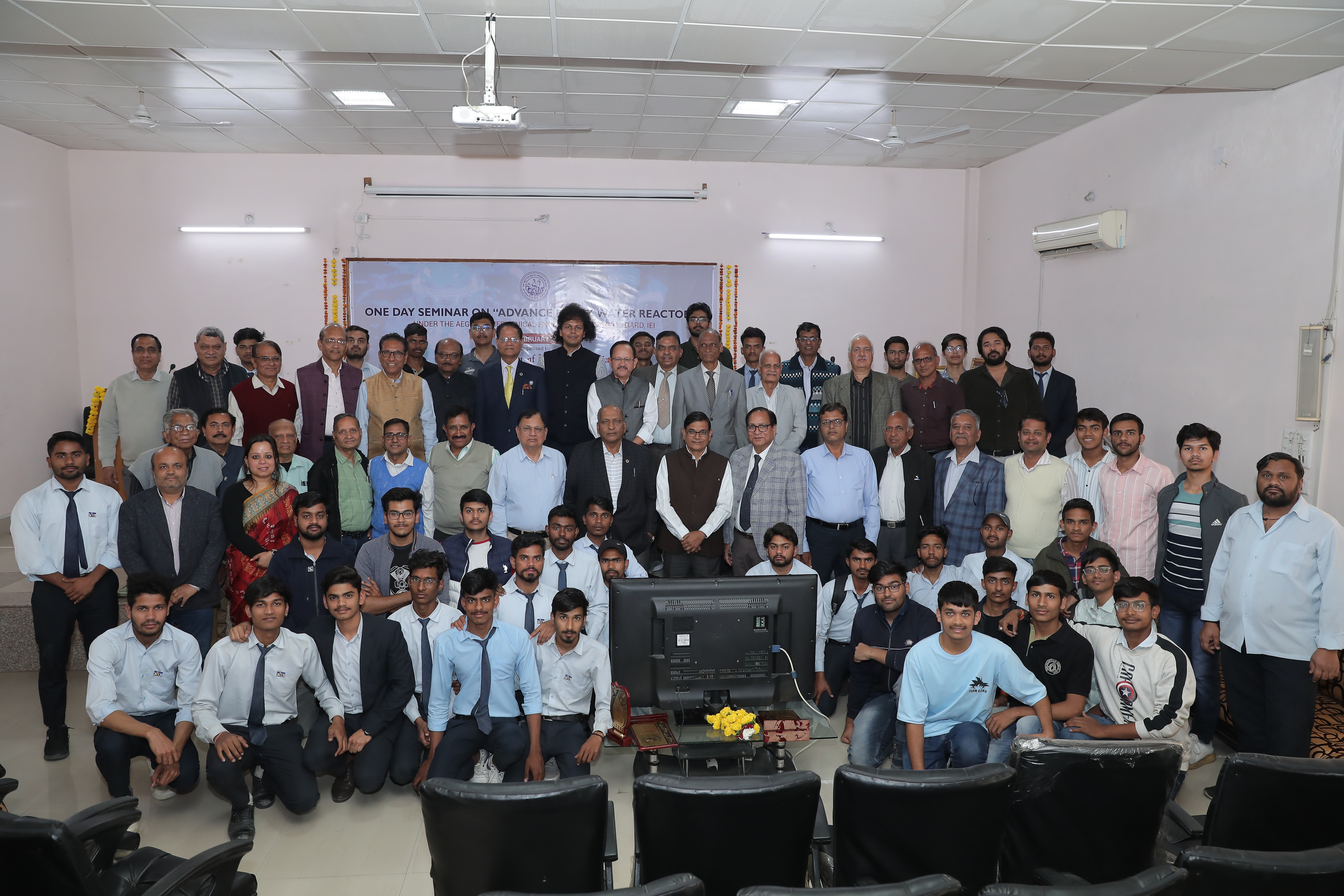
Udaipur: The Institution of Engineers India, Udaipur Local Centre, organized a one-day seminar on "Advanced Heavy Water Reactor" at the Engineers India Udaipur Local Centre auditorium. The ceremony began with the welcome speech by the President of the institution, Engineer Purushottam Paliwal, who shared his thoughts on the topic. He explained that the Advanced Heavy Water Reactor (AHWR) is a new nuclear reactor design aimed at producing electricity using thorium. This reactor, with a capacity of 300 megawatts, is a vertical pressure tube type reactor cooled by boiling light water and controlled by heavy water. It includes several passive safety features. The AHWR is a type of nuclear reactor that uses heavy water as both the moderator and coolant, offering several advantages over traditional light water reactors, including better safety, higher efficiency, and reduced waste.
Engineer Piyush Javeria, the Honorary Secretary of the Institution of Engineers India Udaipur Local Centre, explained that the seminar brought together prominent experts, researchers, and industry professionals to discuss the latest advancements in this critical nuclear technology and its future potential. Presentations and discussions were held on various topics, including the current status of the technology, its potential benefits, safety, recent research and developments, the role of AHWR in meeting future energy demands, and the challenges and opportunities in deploying this technology.
The chief guest, Dr. (Professor) Prithvi Yadav, President and Vice-Chancellor of Sir Padampat Singhania University, Udaipur, spoke about the history of nuclear energy in India. He referred to the prediction made by Homi Bhabha, considered the father of India's nuclear program, that India would generate 8,000 megawatts of nuclear power by 1980. Although this goal was not achieved, he called upon scientists to contribute their expertise toward realizing this vision as part of the "Developed India" mission.
The special guest, Engineer Mahendra Kumar Chauhan, President of Rajasthan State Centre, The Institution of Engineers India, Jaipur, addressed the students, encouraging them to aspire not to just seek jobs but to start their own ventures and create jobs for others.
Dr. Dharmendra Kumar Jain, a speaker and lecturer in the Mechanical Engineering Department at Government Polytechnic College, Kota, and a Council Member of IEI Kolkata, explained that the Advanced Heavy Water Reactor (AHWR) refers to the next generation of nuclear reactor design that mainly uses low-enriched uranium fuel. It was developed by the Bhabha Atomic Research Centre (BARC) in India. The AHWR uses thorium in combination with plutonium or low-enriched uranium to form a fuel cycle and generate energy at a commercial scale. The AHWR is designed to demonstrate the large-scale use of thorium for commercial nuclear power production. It is a 300-megawatt electric vertical pressure tube-type reactor, cooled by boiling light water and moderated by heavy water, incorporating several unique safety features. Additionally, the AHWR process produces desalinated water using waste heat and steam.
Engineer Suresh Chandra Gandhi, Former Scientific Officer, Nuclear Power Corporation of India (NPCIL), discussed two methods of nuclear energy generation: fusion reactors (still in the research phase) and fission reactors, where the splitting of an atom releases energy in the form of heat and radiation. He highlighted that India's domestic fossil fuel resources are limited, and nuclear energy provides a long-term sustainable solution.
Engineer K.K. Sharma, Former Scientific Officer, NPCIL, discussed the main components of a reactor system, including reactor blocks, coolant channels, fuel assemblies, and fuel transfer systems. He explained the function of the coolant channels, the natural circulation process in AHWR, and how the reactor generates electricity and desalinated water without the need for pumps.
Engineer Karan Singh Singhi, Former Scientific Officer, HWP, Nuclear Power Department, elaborated on Homi Bhabha's vision for heavy water production in India and the technologies adopted to support it. He mentioned that India has pursued a two-pronged approach to its heavy water program, involving ammonia-hydrogen exchange technology, though it required significant efforts. The indigenous development of hydrogen sulfide water exchange technology has been an essential focus for the country’s nuclear energy goals.
Engineer Prem Kumar Sharma, Former Deputy Chief Engineer, RR Site, DAE, presented global statistics on nuclear power plants, noting that 31 countries operate 440 nuclear plants, contributing to 390 gigawatts of global capacity. He highlighted that 60 plants are under construction worldwide, and France's total electricity production is 78% nuclear-based. In India, nuclear power contributes 1.8% of the total energy supply. He emphasized the rigorous safety standards applied to nuclear plants and the measures in place for public safety, including mock drills to ensure preparedness in case of accidents.
The seminar's convener, Engineer M.P. Jain, mentioned the goal of bringing subject matter experts together on a single platform. He also spoke about designing advanced safety features for heavy water reactors during his tenure.
The ceremony concluded with a vote of thanks delivered by Engineer Piyush Javeria, the Honorary Secretary of the Institution of Engineers India, Udaipur Local Centre.